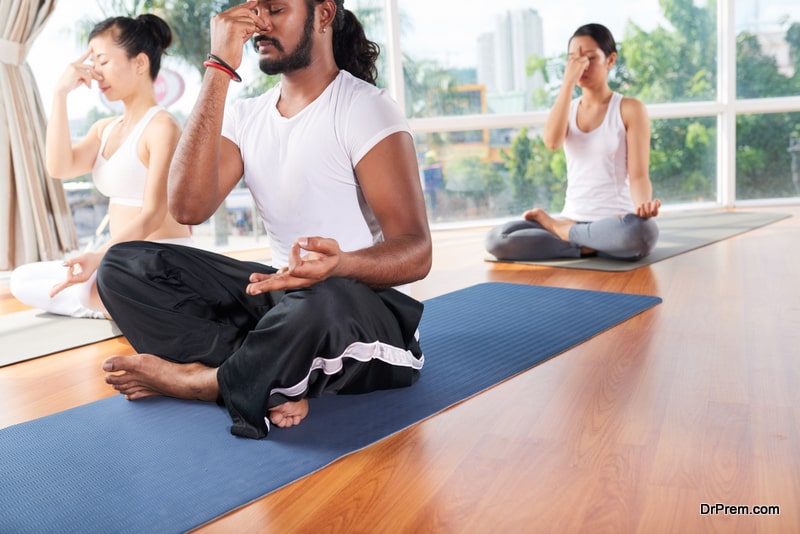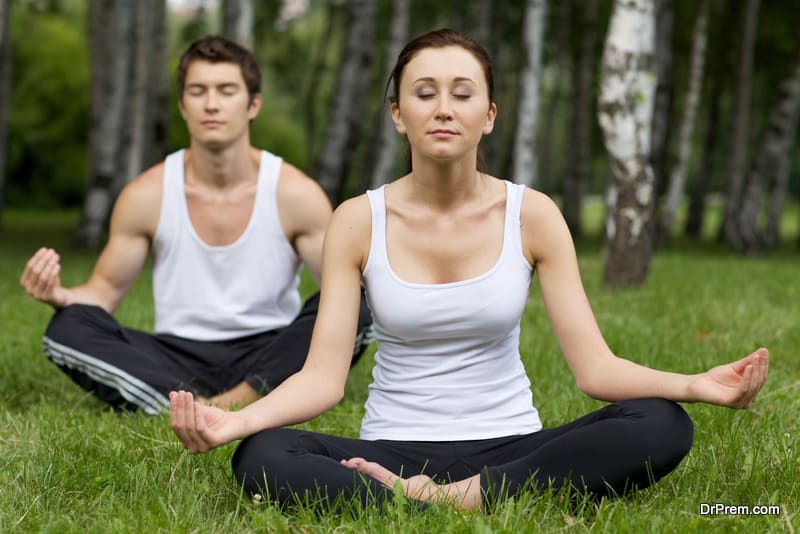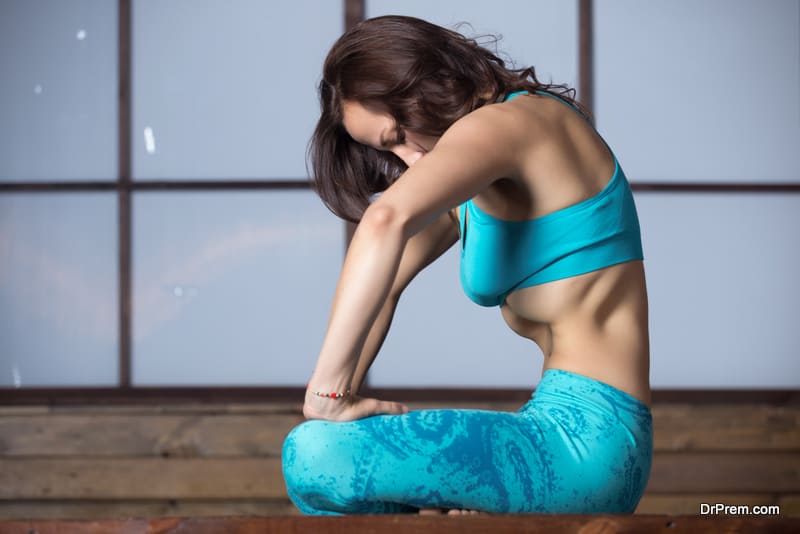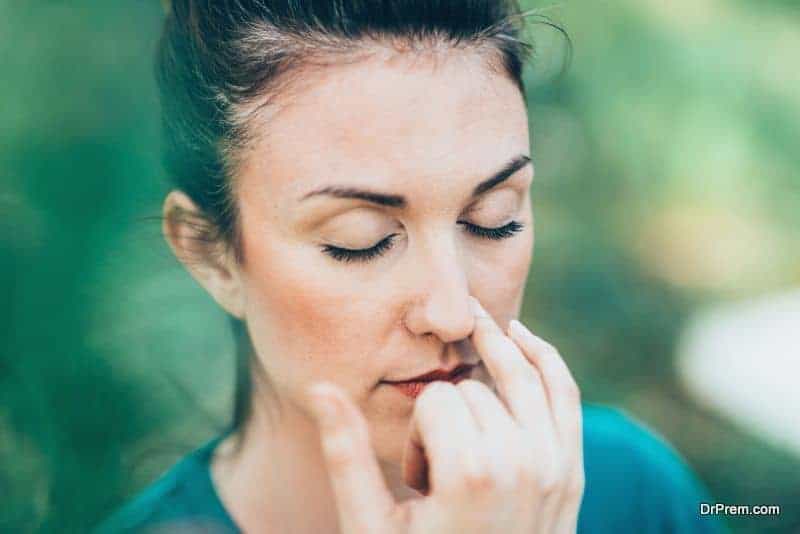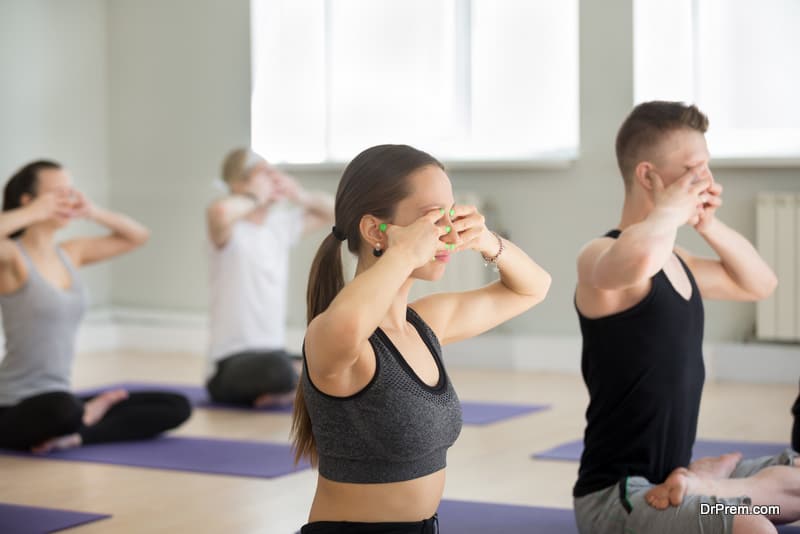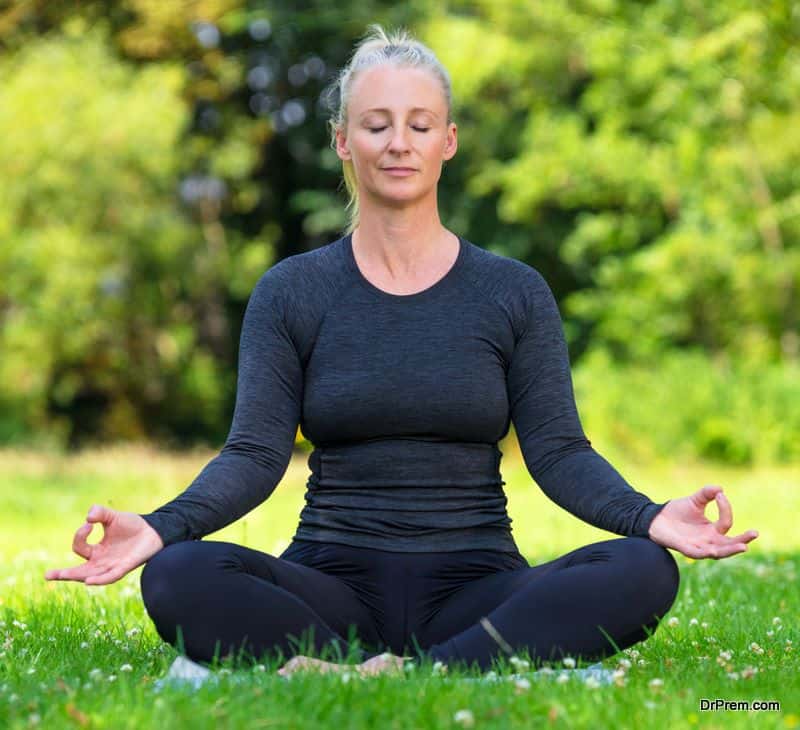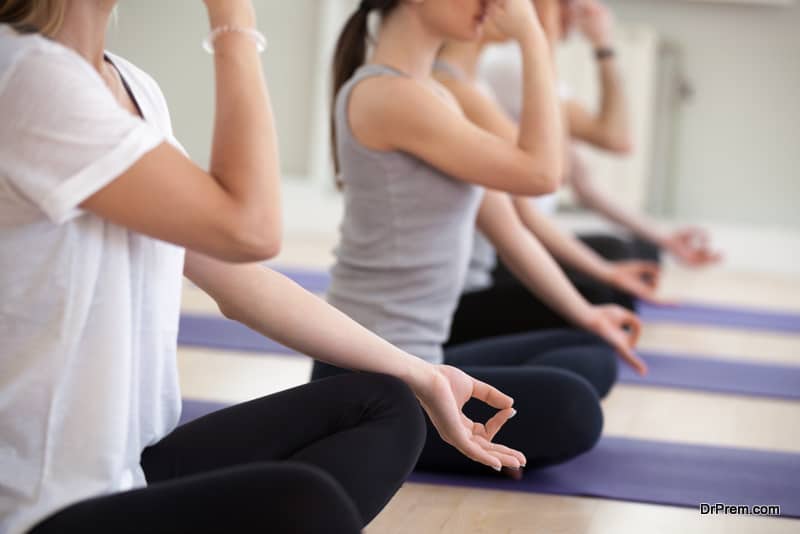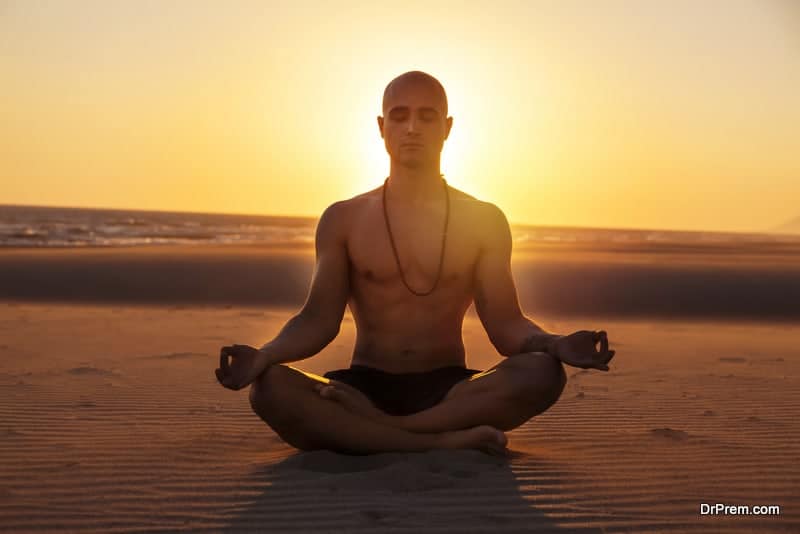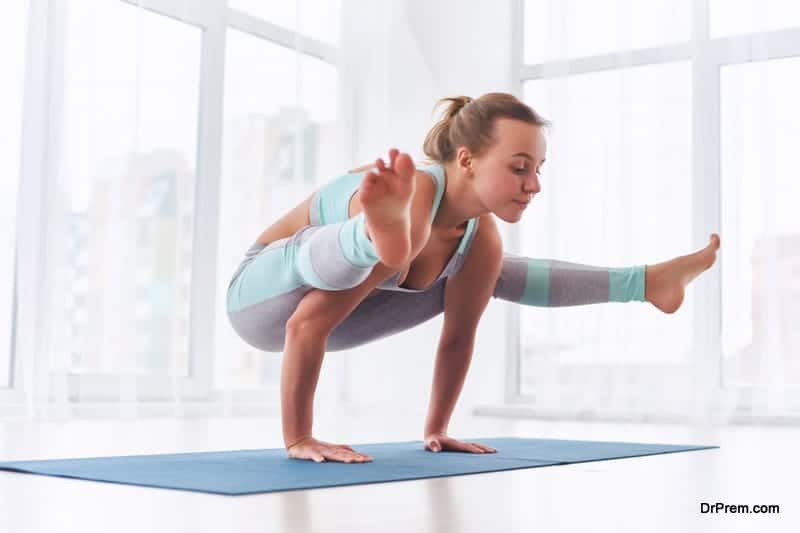In this age old ancient discipline called Yoga, knowing the Pranayama or traditional breathing techniques is the primary requirement for any Yoga practitioner. The main objective of Pranayama is to help you attain relaxation by learning the various processes of breathing. It does not require you to follow any kind of rigid techniques unreasonably but instead, it helps you to practice and establish healthful rhythms and give you an insight into your own nature of various breathing processes.
Yoga-Pranayama, traditional Breathing Techniques of Yoga
-
What makes Pranayama essential for us
-
Pranayama Techniques
-
High Breathing
-
Low breathing
-
Middle breathing
-
Complete breath
-
How to include pranayama in your regular fitness routine?
-
Pranayama exercises to fit in your regular fitness schedule
-
Anulom Vilom ( Nadi Shodhana or Alternate Nostril Breathing)
-
Ujjayi Pranayama
-
Bhramari
-
Bhastrika
-
Kapalbhathi
-
Dos and don’ts in pranayama
What makes Pranayama essential for us
Proper breathing is essential to good health as it enables the movement of blood throughout the body and accordingly, keeps us alive. It is the only means to supply our bodies and its various organs with the supply of oxygen, which is vital for our survival, and remove waste substances and toxins from the body. Breathing is a continual process that continues on even when we are asleep.
A new evidence study released by GWI ( Global Wellness Institute) says, Pranayama breathing exercises relieves anxiety and can lead to positive changes in the brain. A randomized clinical trial by Brazilian doctors shows pranayama yoga led to significant decline in anxiety levels and its negative impact. They used fMRI ( Functional Magnetic Resonance Imaging) to identify the significant changes in specific areas of brain caused by pranayama that helped in emotional regulation. The breathing exercises also impacted amygdala, anterior insula, anterior cingulate cortex, dorsolateral prefrontal cortex, ventromedial prefrontal cortex and ventrolateral prefrontal cortex.
Our skin will suffer if we do not receive proper oxygenated blood running through our body; even the muscles will tire entirely in such a situation. To breathe properly, we use our diaphragm – the large sheet-like muscle that lies at the bottom of the chest cavity. One in-breath and one out-breath make one cycle.
Slow, rhythmic breathing helps in regulating the flow of oxygen and carbon dioxide, slowing, which further slows the heart rate, eases anxiety and ensures that blood circulates the optimum amount of nutrients through the body. Oxygen being the most powerful stimulant is the most important chemical in the body.
With the advent of meditation and particularly breathing exercises, it is becoming common knowledge that our breathing pattern has a profound influence on how we feel.Incorrect breathing can lead to a variety of diseases, and that is why the importance of how we breathe must be taken seriously, especially if we desire sound health and a balanced and happy emotional life.
Breathing detoxifies our bodies because when we exhale, we release carbon dioxide from our bloodstream. It relaxes the mind because it brings clarity of insight to us and hence, clearing uneasy feelings present in our body.
During deep breathing, the movement of the diaphragm massages the stomach, intestine and liver, the upper movement of which massages the heart. Our immune system strengthens because of the supply of oxygen through our bloodstream.
There is no better way to sense our interconnectedness than to begin a breathing practice.Anyone who has done any kind of meditation or breathing exercises would know how peaceful and blissful deep rhythmic breathing could be. It is relaxing and highly soothing, the simple bliss we all desire.
Pranayama Techniques
High Breathing
Also known as Collarbone breathing or Clavicular breathing, it mainly takes place in the upper region of both your lungs and chest and involves the raising of your shoulder, collarbone and ribs. When a person becomes short of breath due to a very tight belt, excessively full stomach or Asthma attack, they automatically switch to high breathing in order to fill their lungs with minimum of amount of oxygen required to continue breathing. However, high breathing is not only shallow but it is also regarded as the least desirable type of breathing because in this process your lung uses the upper lobes with small air capacity. Besides this, due to the rigidity of upper part of rib cage, very less expansion takes place in your ribs and continuous practice of high breathing can give rise to various health problems like constipation, stomach, digestive or gynecological problems.
Low breathing
The breathing that takes place in the lower part of lungs and chest is regarded as low breathing. This form of breathing is far more effective than high breathing and middle breathing for the following reasons:
- More air is inhaled because of the greater movement of the lung’s lower lobes with larger air capacity.
- The diaphragm helps in increasing the blood circulation.
- The movement of the diaphragm helps in massaging the abdominal organs.
- Solar plexus, an essential nerve centre is greatly benefitted by low breathing.
Middle breathing
Middle breathing helps in filling the middle part of your lungs with air and it exhibits both the characteristics of high and low breathing. This form of breathing involves sideways expansion of both the ribs and chest.
Complete breath
The combination of low, high and middle breathing is called as complete breath and it involves the function of all the organs of the respiratory system. This form of breathing is also regarded as one of the deepest form of breathing one can exercise. For a yoga practitioner, it is very important to master the art of complete breathing at the very beginning as all the different forms of Yoga breathing are primarily based on the complete breath. However, this form of breathing is only done during the breathing exercise or Pranayama because during normal hours you practiced the other three breathing forms as per your body requirement.
How to include pranayama in your regular fitness routine?
It is not tough to include 10-15 minutes of pranayama into your regular fitness routine. Many people combine yoga, meditation and pranayama to extract the umpteen benefits of these mind-body techniques. All you need is a distraction-free space and fixed time schedule to carry on with these breathing exercises.
5 Pranayama exercises to fit in your regular fitness schedule
1. Anulom Vilom ( Nadi Shodhana or Alternate Nostril Breathing)
- Sit in padmasana ( cross-legged position keeping your backbone straight)
- Close the right nostril with your thumb and inhale as much as you can with the left nostril till your lungs are inflated.
- Remove the thumb and exhale. During this process, close the left nostril with the middle finger.
- Do it for 2-5 minutes
2. Ujjayi Pranayama
- Inhale and exhale air normally a few times
- Bend your head down to block the free flow of air. Inhale as much as you can making a sound with your throat. Hold it for 5 seconds
- Use your right thumb to close your right nostril and exhale through the left nostril.
- Repeat 10-12 times.
3. Bhramari
- With your thumbs, close your ears. Place the index fingers on temples.
- Use three fingers to close your eyes.
- Inhale with your nose gently and hold it for a few seconds. Keep your mouth closed and exhale making a humming sound like a bee.
- Do it 5 times
4. Bhastrika
- Inhale air as much as you can by expanding the stomach.
- Exhale forcefully drawing your navel towards the backbone.
5. Kapalbhathi
- Inhale air normally as much as you can.
- Exhale forcefully by pulling your stomach to your backbone as much as you can.
- Do it for 2-5 minutes.
Dos and don’ts in pranayama:
- Follow correct breathing techniques.
- Sit in a proper manner. The best posture -the center of your tail-bone’s bottom should be perpendicular to the floor.
- Fix a specific time of the day for regularity and benefits. Morning is the best time when the air remains pure and contains maximum oxygen.
- Select outdoors or well-ventillated rooms for the practice.
Don’ts
- Do not do yogasanas after pranayama. However, pranayamas can be done before yoga.
- Do not do pranamayas while in a hurry.
- Avoid pranayamas if you have congested chest, feeling tired or depressed.
- Do not do pranamayas after meals or when you are hungry.




